by | Dec 10, 2012 | 01 What's New, Genealogy Gems Podcast
 Sometime over the first busy holiday weekend in December 2012, The Genealogy Gems Podcast reached an incredible milestone: 1 Million Episode Downloads!
Sometime over the first busy holiday weekend in December 2012, The Genealogy Gems Podcast reached an incredible milestone: 1 Million Episode Downloads!
In early 2007 when I published the first episode, podcasting was in its infancy, having just come into being in mid-2005. It was like being part of a new Wild West of technology. For the first time anyone with an interesting idea, a computer, and a willingness to work long hours could produce a worldwide ‘radio’ show. The day I listened to a podcast for the first time, I knew this medium was what I had been waiting for to reach genealogists.
Apparently a lot of other folks were also anxiously looking for new and valuable genealogy information. From long time genealogists to dabbling family history newbies, they flocked to the free podcast available through Apple’s iTunes Store and the Genealogy Gems website (www.GenealogyGems.com). Over the next five years they listened in to soak up genealogy research strategies, expert interviews, tips on harnessing the power of technology in their research, and creative ideas for sharing their findings.
There’s a lot of noise out there online that can be overwhelming. My goal has always been to spend my time sifting through all of that information, and chiseling out the gems – the items that are really worthwhile – so that you, my listeners, can have faster and greater success . Ultimately I hope that the genealogy gems I provide on the show lead to your own genealogy gems: your precious ancestors!
What started as a single podcast episode has turned in to a multi-media genealogy publishing company. Genealogy Gems now encompasses offerings, many that are free, that accommodate every learning style: audio, video, articles, books, dvds, toolbar, live classes, and online webinars. The Genealogy Gems mobile app (available in the iTunes App Store, and an Android version through Amazon) gives genealogists the flexibility to hit the road and take it all with them. I’m very proud of the team of talented individuals that I’ve assembled who have made this expansion possible.
I speak at events across the U.S. and internationally, but not everyone can get out to a genealogy conference. It’s critical to me that we meet people where they are, and that’s what the Genealogy Gems website, YouTube channel, app, and toolbar are all about. The fact that the podcast has now been downloaded 1 million times confirms that that we are accomplishing that goal.
I hope that you will share this fun, celebratory infographic on Facebook, Pinterest and other social networking sites to help spread the word to others interested in discovering how podcasts can help them reach their genealogy goals.
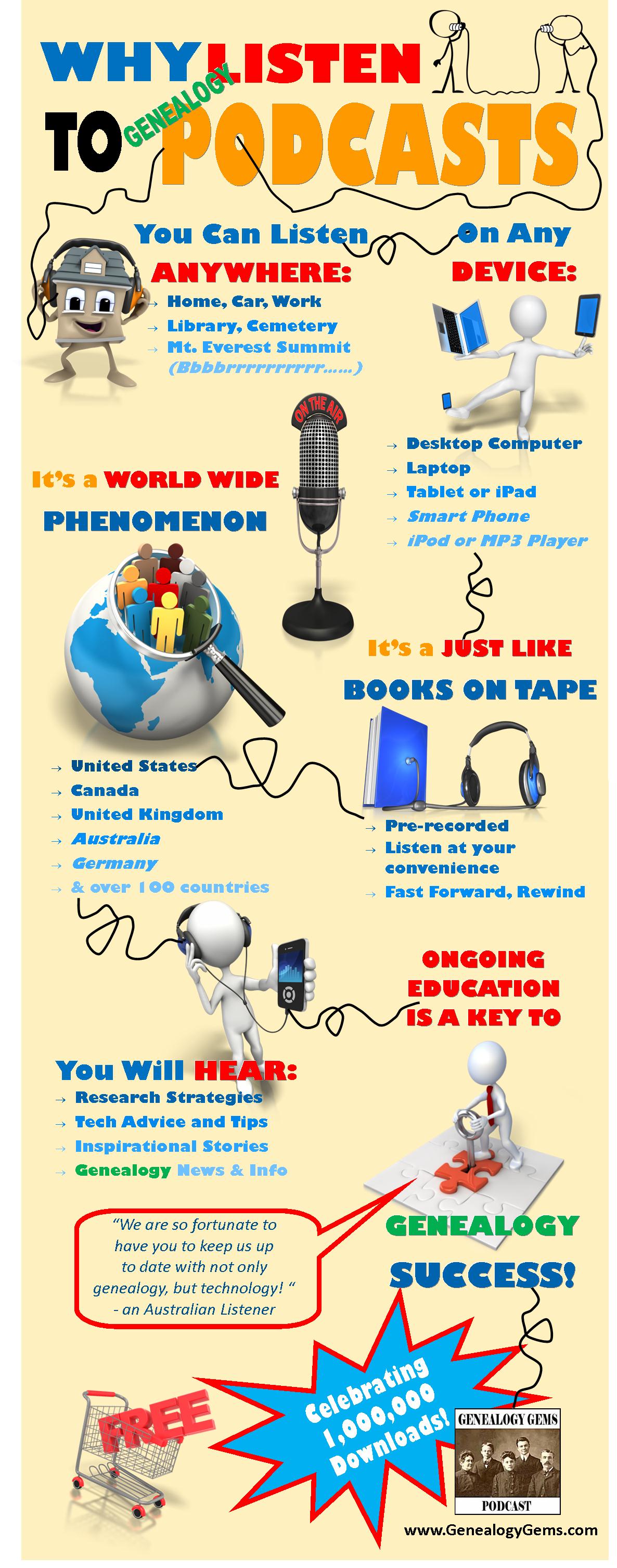
Fun Facts about Genealogy Gems:
The Genealogy Gems Podcast launch date: March 1, 2007
Number of free episodes published: 146
Number of countries with listeners: 126
Top 10 Listening Cities in the U.S.:
Los Angeles, San Francisco, New York, Salt Lake City, Washington DC, Dallas , Chicago, Seattle, Boston, Phoenix.
Genealogy Gems App publish date: 2009
Podcast rating in iTunes: 5 Stars (including 53 written reviews)
Recognition:
101 Best Websites List by Family Tree Magazine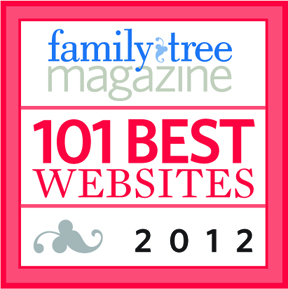
Named one of the top 10 apps by App Advice’s “iPad Apps for Hobbyists”
Number of views of the Genealogy Gems YouTube Channel:
191,000 and counting (www.youtube.com/genealogygems)
Celebrities featured on the podcast include:
Lisa Kudrow (Friends, Who Do You Think You Are?),
Henry Louis Gates (Oprah’s Roots)
Tim Russell (Prairie Home Companion)
Darby Hinton (Daniel Boone)
Kathy Lennon (The Lennon Sisters)
Ali Selim (Sweet Land)
Tukufu Zuberi (History Detectives)
Linda Chavez (Fox News, Finding Your Roots)
by Lisa Cooke | Jul 8, 2015
 Using Evernote for genealogy will make you a more efficient and effective researcher.
Using Evernote for genealogy will make you a more efficient and effective researcher.
Genealogists all over the world are harnessing the power of Evernote to organize their family history research. This free software (and website application) can bring all your research materials (text notes, photos and images from mobile devices, video, audio interviews, web content and URLs) together in one place.
Then it goes even further by making all the text items keyword-searchable. So you can much more easily locate that one little piece of information you recall only as “that bit about the fire station he worked for.”
Better yet, Evernote goes with you. With the Evernote software and companion app, your genealogy notes will be accessible from and fully-synced across all your computing devices. Sigh! It’s wonderful!
Here’s how to get started
1. Download the free Evernote software here.
2. Create your free or premium Evernote account. (Click here to learn more about Evernote account options.)
3. Go to your Account page and make note of your unique Evernote email address. (Help>Go to My Account Page>Account Summary and scroll down to “Email Notes to.”)
4. Download the free Evernote web clipper for your web browser.
5. Download the free Evernote app from the App Store or Google Play and sign in to your account.
Now you’re ready to use Evernote to collect your research content and source citation information!
Here are 5 ways to add content to Evernote
1. The Web Clipper: Pull data from websites with the handy web clipper and Evernote will often automatically capture information about the site you got it from.
2. Drag and Drop: Images, scanned documents and other multimedia content can be dropped right into new or existing notes.
3. Smartphone and Tablet: Snap a photo of a record, tombstone or any other genealogical item. (I like to do a quick photo “Edit” cleanup to get it in the best shape possible). Tap the Share button and send it to Evernote.
4. Email Content: Use your unique Evernote email address to send content from anywhere to your account.
5. Good Old Typing: Click “New Note” and start typing. You can always add other content including merging notes together.
Resources for Success
There’s so much demand for learning to use Evernote for genealogy that I’ve created a variety of helpful resources in video, audio, print and online formats (because everyone learns differently!).
FREE YouTube Video Series: Evernote for Genealogy
I’ve posted two videos so far on my free YouTube series:
Evernote for Genealogy Quick Reference Guide
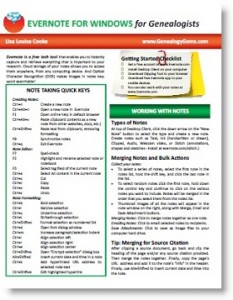 My laminated reference guide is super handy for every day support! This guide includes:
My laminated reference guide is super handy for every day support! This guide includes:
- A Getting Started Checklist
- Quick Keystrokes
- Getting the Most Out of Clipping
- Maneuvering the Desktop Client
- Genealogical Organization
- Little-Known Search Strategies
- Specialized Genealogy Focused Techniques
- Comparison of Evernote Pricing Tiers
The guide is available for both Windows and Mac users, in both print and digital download format. Click below to view:
The Ultimate Evernote for Genealogy Education
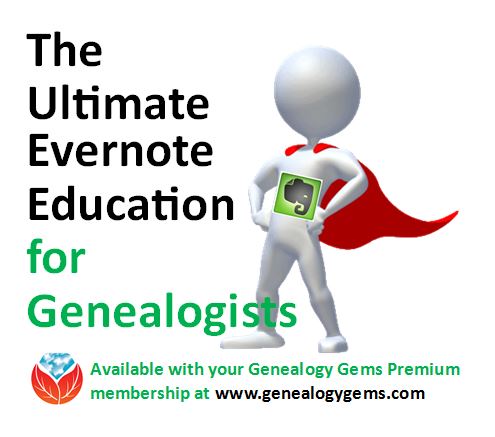 Genealogy Gems website Premium members have a full-year’s access to my popular in-depth video classes, which include The Ultimate Evernote for Genealogy Education video series. This series includes the following full-length and mini-series classes:
Genealogy Gems website Premium members have a full-year’s access to my popular in-depth video classes, which include The Ultimate Evernote for Genealogy Education video series. This series includes the following full-length and mini-series classes:
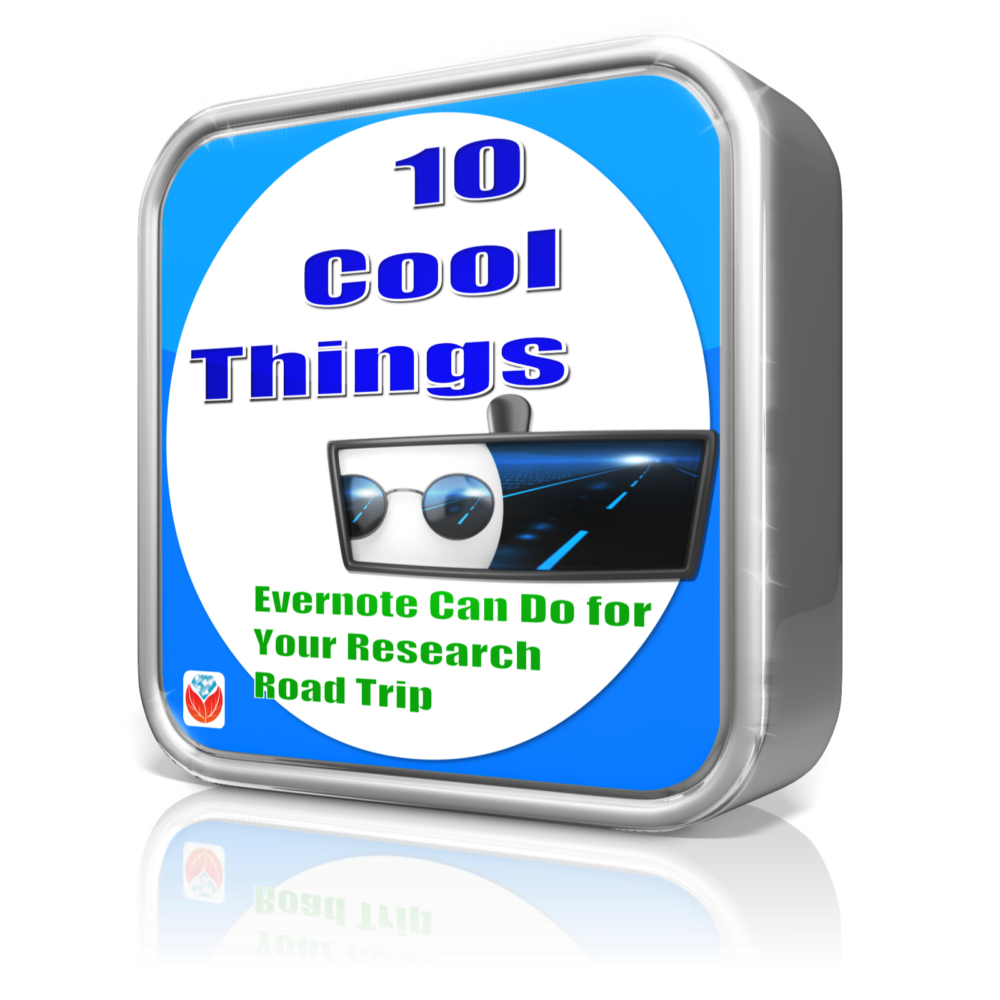 Keep up on all my latest Evernote news and Q&As!
Keep up on all my latest Evernote news and Q&As!
Click here to read my Evernote blog posts.
Sign up for my free email newsletter (that sign-up comes with a free bonus e-book!).
Who else do you know who would benefit from getting organized? I hope you’ll share this page with your friends, relatives, family history buddies and fellow gen society members using the share icons below. Thanks!
by Lisa Cooke | Nov 15, 2015 | 01 What's New, Ancestry, Blogs, DNA
 We are celebrating our 1000th Genealogy Gems blog post with a list of our Top 10 Posts. Share this post on Facebook and you could win an inspiring family history writing video!
We are celebrating our 1000th Genealogy Gems blog post with a list of our Top 10 Posts. Share this post on Facebook and you could win an inspiring family history writing video!
I can hardly believe it. This month, the Genealogy Gems website will reach a milestone 1000 blog posts! Thank YOU for your emails, phone calls and comments at conferences. I often share your success stories and use your feedback to bring you more great content.
Below is a list of our most-read posts so far. Did you miss any? Keep reading to learn how to win a a great family history writing prize by sharing this post on Facebook!
Our Top 10 Blog Posts
1. Ancestry Up for Sale? By far the most-read post in 2015! We weren’t just talking about the sale rumor, but sharing advice on saving your Ancestry trees, sources and DNA, which everyone should do.
2. Best Genealogy Software: Which You Should Choose and Why. This is my spiel on why you should keep your master family tree on software at home–not on your favorite genealogy website. It includes my top picks for family tree software, including free options.
3. Four Fabulous Ways to Use the Library of Congress for Genealogy. A lot of you are interested in the Library of Congress’ online resources for digitized photos, newspapers and how-tos for archiving your family history. Read all about it!
4. Free Google Earth for Genealogy Class. The conference lectures I give on Google Earth for genealogy are so popular that I created a free video that everyone can watch from home. Click on the post, and you can watch the video, too.
5. AncestryDNA Review and Breaking News: Updates Launched. Our own DNA correspondent Diahan Southard penned this popular post on AncestryDNA’s ground-breaking integration of our genetics data and our genealogy trees.
6. Seven Free Google Searches Every Genealogist Should Use. Are you getting the most out of free Google search technologies? Scan this list and see what’s missing from your search strategies!
7. NEW! Try This Now! U.S. Social Security Applications and Claims Index. For U.S. researchers, this was the blockbuster database of summer 2015. Millions of parents’ names, birthplaces and more now beef up this go-to Social Security database–its’ far better than its sparse predecessor, the SSDI.
8. Confused by Your AncestryDNA Matches? Read This Post. Another hit from DNA expert Diahan Southard! A great explanation of how to use your New Ancestor Discoveries on AncestryDNA.
9. How are We Related? Use a Cousin Calculator. It’s a simple, easy online tool, shared in response to a listener’s question.
10. New AncestryDNA Common Matches Tool: Love it! Diahan reports on a fabulous online tool that pulls out shared genetic matches between two people at AncestryDNA.
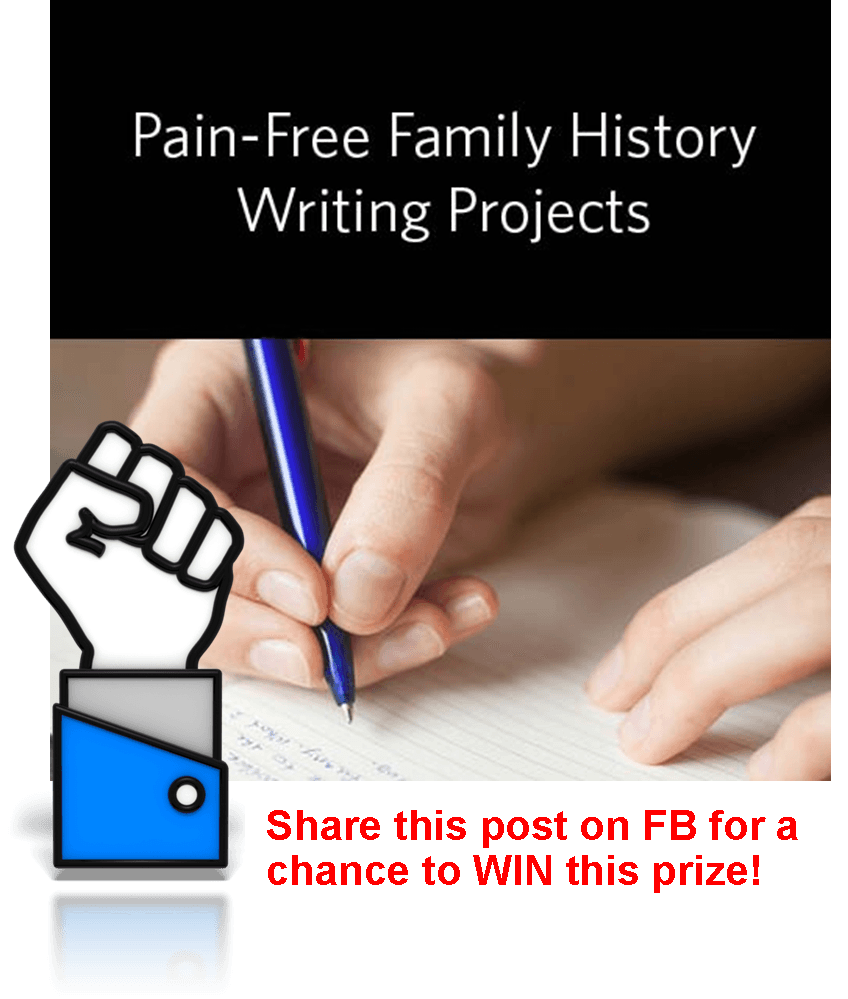 Will you please share this post on your Facebook timeline to help me spread the word about the “gems” you can find on the Genealogy Gems blog?
Will you please share this post on your Facebook timeline to help me spread the word about the “gems” you can find on the Genealogy Gems blog?
Here’s a little extra incentive: Use the hashtag #genealogygems and SHARE THIS POST ON YOUR FACEBOOK PAGE BY FRIDAY (November 20, 2015), and you’ll be entered in a contest to win the Pain Free Family History Writing Project video course download. It’s presented by Gems Contributing Editor Sunny Morton and donated by our friends at Family Tree University. Of course you’re welcome to add any comments on your “shared” post, like which Genealogy Gems blog post has most inspired you or helped your research. That feedback helps us bring you more posts you’ll love.
 Ready, set, SHARE! And thank YOU for helping me celebrate our 1000th blog post here at Genealogy Gems.
Ready, set, SHARE! And thank YOU for helping me celebrate our 1000th blog post here at Genealogy Gems.
by Lisa Cooke | Jul 14, 2017 | 01 What's New, Ancestry, Census, Church, FamilySearch, Military, Records & databases, School Records, United States
Learn more about U.S. ancestors in new genealogy records for Navy and Marine officers, WWI veterans, historical and genealogical journals, and new genealogy records for 12 U.S. states: Ala., Ark., Hawaii, Kan., La., Mass., Miss., Mont., N.Y., Texas, Utah, and Va.
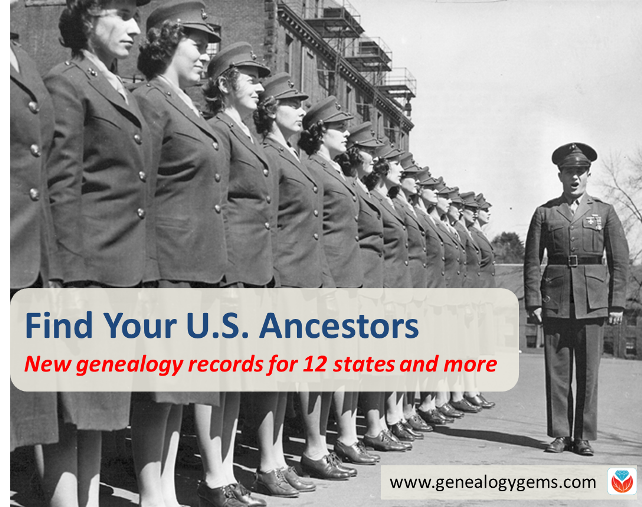
Following are new genealogy records (and updated collections) for the U.S. and several U.S. states. In which may your ancestors appear?
U.S. Navy and Marine Corps Officer Registries. Ancestry.com subscribers may search a new database, “U.S., Navy and Marine Corps Registries, 1814-1992.” From the collection description: “This collection includes registers of officers of the US Navy and Marine Corps from between the years of 1814 and 1992. Within these records you can expect to find: name, rank, ship or station.” (Note: the above image shows the first group of female Marine officer candidates in 1943; click here to learn more and see this image’s citation.)
World War I Veteran’s History Project: Part II Launches. The Veterans History Project has launched “Over There,” the second in a three-part, online web series dedicated to United States veterans of the First World War. “Over There” highlights 10 digitized World War I collections found in the Veterans History Project archive. Click here to access Part II and other veterans’ collections featured in “Over There.” Part III will be available in fall of 2017. (Click here to read the full announcement from the Library of Congress.)
U.S. and Canada journals. 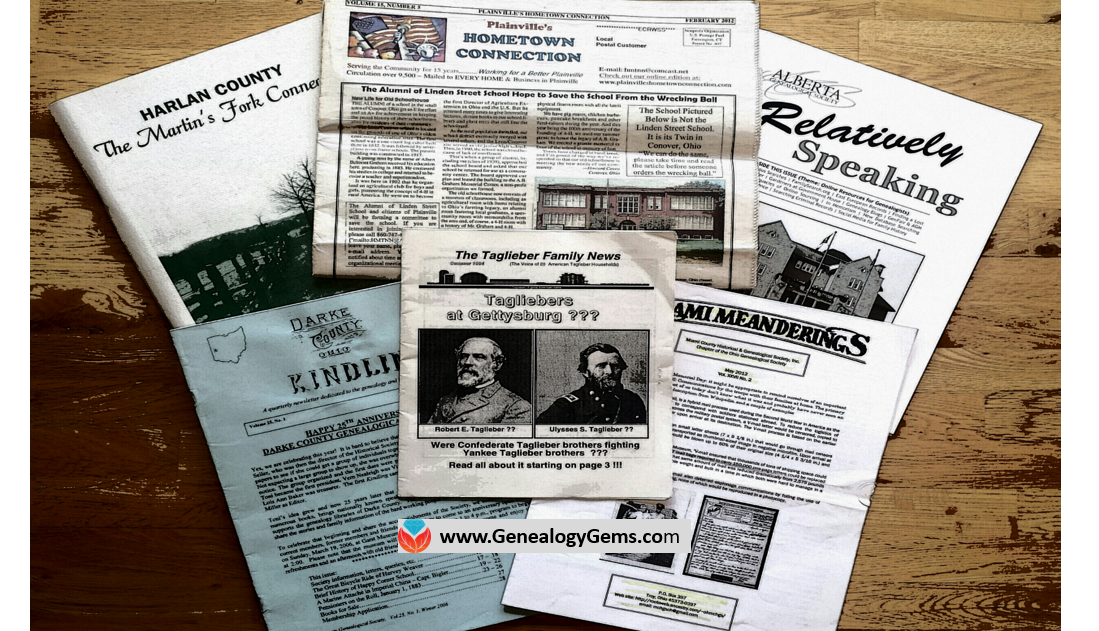 PERSI, the Periodical Source Index, has been updated with historical and genealogical journal content covering Ontario, Canada as well as Massachusetts, Minnesota, Missouri, Michigan, & Rhode Island. Search PERSI at Findmypast.com to discover articles, transcribed records, and images of your ancestors and their communities, churches, schools and more in thousands of journals. Some journals are index-only and others have digitized articles: click here to learn more about PERSI.
PERSI, the Periodical Source Index, has been updated with historical and genealogical journal content covering Ontario, Canada as well as Massachusetts, Minnesota, Missouri, Michigan, & Rhode Island. Search PERSI at Findmypast.com to discover articles, transcribed records, and images of your ancestors and their communities, churches, schools and more in thousands of journals. Some journals are index-only and others have digitized articles: click here to learn more about PERSI.
Statewide: New genealogy records
- Alaska: Ancestry.com has a new database of Alaska, Vital Records, 1818 -1963. It contains birth, marriage, and death records.
- Arkansas: A new digital exhibit tells the story of the first African-American college west of the Mississippi River, located in Phillips County. Lives Transformed: The People of Southland College “includes photos and scanned images of letters, circulars, forms, the Southland newspaper and other ephemera, including invitations, the catalog of studies, a diploma, and a commencement program,” states a news report.
- Hawaii: Over 300,000 indexed names have been added to a free FamilySearch.org collection of Hawaiian obituaries since 1980.
- Kansas: New browsable image collections of Kansas state census records for 1865, 1875, 1885 and 1895 are now free to search at FamilySearch.org. The growing size of each collection by year–from 4,701 pages in 1865 to 116,842 pages in 1895–witnesses the tremendous growth of this prairie state after the Homestead Act of 1862 opened its land for cheap purchase and settlement. (Did you know? Kansas census records 1855-1940 at Ancestry.com are also available for free to Kansas residents.) Click here to learn more about state census records in the U.S.
- Louisiana: Over 100,000 new images and thousands of indexed names have been added to FamilySearch’s free collection of Louisiana death records (1850-75, 1894-1960).
- Massachusetts: More than half a million names are in 22 volumes of sacramental records (baptisms, confirmations, marriages, deaths) for the Cathedral of the Holy Cross, Archdiocese of Boston, now online at AmericanAncestors.com.
- Mississippi: Ancestry.com has updated its collection of Mississippi Naturalization Records, 1907-2008. This collection pertains to naturalizations finalized after 1906, when most were taken care of in federal courts.
- Montana: Find a new collection of Montana County Marriages, 1865-1993 at Ancestry.com. Details for both the bride and groom may include name, age at marriage, and marriage date/place. (You may also access this collection for free at FamilySearch.org.)
- New York: The Leon Levy BAM Digital Archive has added more than 70,000 playbills, posters, and ephemera from the history of the Brooklyn Academy of Music, dating to the Civil War era. (We found this in a New York Times report.)
- Texas. Ancestry.com has updated its database, “Texas, Select County Marriage Records, 1837-2015.” The collection description states, “This collection consists of a mix of marriage licenses, returns, certificates, affidavits, and indexes. The documents that are available in this database vary depending on the county. All marriage records include the names of the bride and groom, as well as the date of the license and/or marriage. In many instances, additional details are available as well.” This collection continues to be updated: keep checking back!
- Utah: There’s a new digital archive of photos, yearbooks, and other documents relating to the history of Brigham Young College in Logan, Utah. The school taught high school and college courses and was open 1877-1926. Learn more about it in a news report at HJnews.com.
- Virginia: A decade’s worth of obituaries from the Evening Star (Winchester, 1899-1909) are now available at subscription site Findmypast.com.
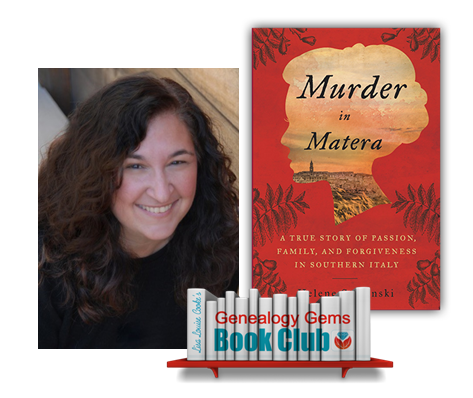 Did you see the new Genealogy Gems Book Club announcement for this week? It’s a new memoir by a U.S. journalist who tracks down an old family story about her immigrant roots. You won’t want to miss this family history murder mystery! Click here to learn more about the book and watch a trailer for its PBS documentary.
Did you see the new Genealogy Gems Book Club announcement for this week? It’s a new memoir by a U.S. journalist who tracks down an old family story about her immigrant roots. You won’t want to miss this family history murder mystery! Click here to learn more about the book and watch a trailer for its PBS documentary.
Disclosure: This post contains affiliate links and Genealogy Gems will be compensated if you make a purchase after clicking on these links. Thank you for supporting Genealogy Gems!
by Lisa Cooke | Aug 13, 2014 | 01 What's New, Beginner, Blogs, Family History Podcast
Family History: Genealogy Made Easy Podcast
with Lisa Louise Cooke
Republished August 13, 2014

Listen to the Family History: Genealogy Made Easy podcast by Lisa Louise Cooke. It’s a great series for learning the research ropes and well as refreshing your skills.
https://lisalouisecooke.com/familyhistorypodcast/audio/fh41.mp3
Download the Show Notes for this Episode
Welcome to this step-by-step series for beginning genealogists—and more experienced ones who want to brush up or learn something new. I first ran this series in 2008-09. So many people have asked about it, I’m bringing it back in weekly segments.
Episode 41: How to Start a Genealogy Blog, Part 4: Get Inspired!
We’ve been talking quite a bit about family history blogging in the last few episodes. Today I have a few goodies for you this week that should help you make significant progress in creating your own blog if that’s something you’d like to do, and some goodies from other genealogy bloggers that will inspire and entertain you.
Blog post: Finding Charlie Stone, by Lee Drew
I really enjoy reading genealogy blogs that share insight into how the bloggers research has enriched their lives and I particularly enjoy reading the family stories they uncover along their journey.
In Episode 69 of the Genealogy Gems Podcast I featured a blogger reading one of their favorite blog posts (and my favorite for that matter) for the first time on the show. Lee Drew read his post My Mother Was A Quilter – the charming story of his early years growing up in a family of quilting women, and how his life hasn’t changed that much because he is surrounded by them today with his own wife, daughters and daughter-in-laws.
So sit back and enjoy another blog post called Finding Charlie Stone, by Lee Drew, who blogs at FamHist 2 and Lineage Keeper.
Did you start your own genealogy blog?
I have another talented genealogy blogger for you in this episode, but before we hear from her, I want to say that I hope you took a few minutes to follow the steps outlined in Episode 40 of this podcast and got your own blog started. Remember, you don’t have to make it public – so you can dabble all you want and only share if and when you’re ready.
To help you along I have produced two videos for you that walk you through those same steps, but in the videos I show you live on the computer screen how it’s done. So head to my Genealogy Gems TV Channel at YouTube to watch How to Blog Your Family History, Part 1 & How to Blog Your Family History, Part 2. Rest assured, there are more videos to come because we have only scratched the surface in creating your blog and actually blogging.
Blog Post: How Blogging Has Benefited My Research by Amy Coffin
Here’s a goodie from Amy Coffin who has a masters in Library science and is an avid genealogist who specializes in the use of Web 2.0 technologies to maximize research results. Her experience in the library world has led to a firm belief in the benefits of social networking and blogging to enhance the genealogy experience. Through her web site, www.AmyCoffin.com, Amy offers ideas on how others can maintain blogs and open up their own family history to whole new levels. When she’s not helping clients with their research, Amy shares her own personal genealogy adventures at her We Tree blog. In this blog post, Amy shares a story about how blogging has benefited her research.
We will be finishing up our family history blogging lesson next week with adding a few more gadgets and details, doing a bit of pre-planning for our blog posts, publishing our first article, and then talking about how your readers will subscribe to your blog.
Right now I’m putting the finishing touches on my class called Google for Genealogy. We’ve talked about various Google tools on both my podcasts and in this class we’re going to wade all the way and go in depth!
 Sometime over the first busy holiday weekend in December 2012, The Genealogy Gems Podcast reached an incredible milestone: 1 Million Episode Downloads!
Sometime over the first busy holiday weekend in December 2012, The Genealogy Gems Podcast reached an incredible milestone: 1 Million Episode Downloads!








 PERSI, the Periodical Source Index, has been updated with historical and genealogical journal content covering Ontario, Canada as well as Massachusetts, Minnesota, Missouri, Michigan, & Rhode Island. Search PERSI at
PERSI, the Periodical Source Index, has been updated with historical and genealogical journal content covering Ontario, Canada as well as Massachusetts, Minnesota, Missouri, Michigan, & Rhode Island. Search PERSI at 
